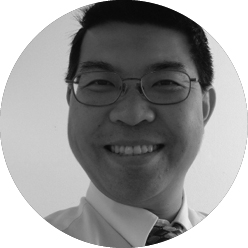supported by


Bennie Jeng, MD
Bennie Jeng, MD, is a professor of clinical ophthalmology and the codirector of the Cornea Service at University of California, San Francisco (UCSF). He is the chief of the Department of Ophthalmology, San Francisco General Hospital, and the director of the Proctor/UCSF Cornea Fellowship Program. He has recently accepted the chairmanship of the University of Maryland School of Medicine’s Department of Ophthalmology and Visual Sciences.
What drew you to ophthalmology and your field of interest?
I have always been fascinated by surgery, and specifically transplant surgery. The idea of replacing a diseased part of the body with a donor that could restore complete function was the most interesting concept to me in medical school. I thoroughly enjoy seeing patients in the office as well. Ophthalmology gave me what I believed to be the best mix of outpatient medicine and surgery. Because the cornea is the only part of the eye that can really be transplanted, I knew at the beginning of residency that I was going to be a cornea specialist.
Describe your current position at UCSF, both clinically and academically.
The best part of my current position at UCSF is that every day is different. In my faculty practice, I spend approximately 2 to 3 half days per week seeing patients and 1 to 2 half days per week performing surgery. During this time, I teach fellows and residents. The rest of my time is spent between running the Department of Ophthalmology at the San Francisco General Hospital (where the residents spend approximately 20% of their residency) and doing research. My main research focus is in corneal epithelial wound healing, and my grant funding is in this area. I am involved in several clinical trials.
What are some new technological advances that you have found particularly exciting in their application?
In the field of cornea, the newer techniques of selective lamellar transplantation, particularly endothelial keratoplasty, are very exciting. In addition, femtosecond laser technology, specifically its corneal applications as well as anterior segment imaging, are exciting.
Who are your mentors?
On the professional side, I have had many mentors. Without diminishing the roles of others who have helped me along the way, without a doubt, my two most important mentors were David Meisler, MD, and Richard Abbott, MD. David was an amazing mentor to me when I was a resident in Cleveland and then subsequently when I was a junior faculty member there. Rich was a great mentor during my fellowship at UCSF and has been incredible to me during my current tenure at UCSF. I would also like to recognize both Stephen McLeod, MD, my current chair at UCSF, and Todd Margolis, MD, PhD, at the Proctor Foundation, who have mentored me and taught me by example.
To what do you attribute your success?
The mentoring I received.
What is the focus of some of your research?
The main focus of my research is in corneal epithelial wound healing; however, I have a strong interest in eye banking as well.
What publication are you most proud of or feel has been of the greatest importance to your career?
I am most proud of the article, “The Epidemiology of Ulcerative Keratitis in Northern California,” published in Archives of Ophthalmology in 2010. Although it is perhaps a dry topic, it was the culmination of probably the largest amount of work I have put into a single research project.
What is a typical day in the life of Bennie Jeng? What keeps you busy, fulfilled, and passionate?
As noted previously, there isn’t a typical day, and that’s what I love. Every day at work is different, but it’s always some combination of clinical care and research with a healthy helping of administrative tasks thrown in. The goal is always to do the right thing to make it better for someone else, whether it’s the patients, residents, fellows, students, or my colleagues. What keeps me going and fulfilled is seeing my family every morning before I leave and getting home to have dinner with them every night.
Was becoming a department chair what you had aspired to at this point in your career?
Maybe later on, but certainly not at this point. I still have some insecurities about being as young as I am, but I am very excited about this next chapter.
What most excites you about this next venture as chair of the Department of Ophthalmology at the University of Maryland?
The Department of Ophthalmology and Visual Sciences at the University of Maryland is a department with tremendous potential on all sides: clinical, research, and education. It’s part of a great medical school in a great part of the country. I am excited to help harness this potential and help make it something even better. There’s something special about being a part of this for the very first department in the country that was dedicated to diseases of the eyes.
Do you have any advice for younger ophthalmologists? What would you tell someone just now choosing his or her career path after finishing his or her residency or fellowship?
Graduates of residencies and fellowships all have different interests and intentions, but these can certainly change with time and experiences, and it’s important to recognize that. My advice would be to do what you love, even if what you love changes: don’t be afraid to take some risks. Find a mentor or two who knows and understands you and who can guide you. Above all else, find a work-life balance!


